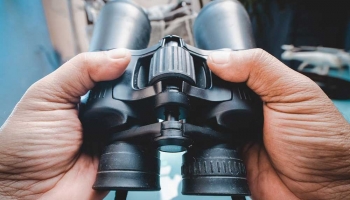Is 10×50 Good for Binoculars?
The first number of the optics means it can bring objects 10 times closer. On the other hand, the second number means its objective lens has a 50mm diameter. The ideal magnification and size of objective lenses vary depending on applications.
The objective lens is located at the far end of your device. Large lenses mean your optical instrument can allow more light in. Therefore, 10×50 binoculars can gather more light than others with smaller lenses. If you intend to use your tool in low light conditions, ensure they have a large objective lens.
Usually, for portability, a maximum of 50mm lens is recommended. For larger lenses, you may have a hard time when holding your optics, and you should consider using a tripod. You’ll find a lot of 10×50 binoculars when shopping. Identifying the differences may even be harder when shopping on online platforms.
Generally, the 10×50 optics will give you great colors, clear images, and some of the best magnification power without the need to have a tripod. To get value for your money, choose the features you need, rank them by price, and then go for products with the features you need and the least price.
Ideally, everyone would want the best binoculars available in the market. But you often don’t need top-of-the-line optics if you intend to use them for specific purposes. In some cases, you may need to give up on some features to gain another advantage. For example, a wide field of view is unnecessary if your device has an image stabilizer.
What’s the Size of the Exit Pupil for 10×50 Binoculars?
Many people tend to underrate the importance of the exit pupil. Usually, most binoculars users focus on factors such as the magnification power and the size of the objective lenses and fail to consider how the exit pupil will affect the performance.
When you hold your optical instrument towards the sky or bright light about 30cm away from the eyes, you’ll see a bright circle at the center of the eyepiece lens. The diameter of the circle is referred to as the exit pupil.
If your device has a large exit pupil, you’ll get brighter images, especially in areas with low light conditions such as when stargazing or dusk or dawn hunting. The exit pupil can be calculated by dividing the size of the objective lens by the magnification power. For more info visit https://www.inhismind.net. Therefore, 10×50 optics have an exit pupil of 5mm. With large objective lenses, you’ll get a large exit pupil, but high magnification translates to a smaller exit pupil.
What is the Field of View for 10×50 Binoculars?
The area of a scene you can see when using your binoculars is known as the field of view. You can determine the size of the area using parameters such as the eyepiece, thickness of lenses, and the magnification power.
If a device has a wide field of view, it means spotting your targets will be easier, especially moving ones. This is why a higher field of view is popular for birding, especially small and fast birds. 10×50 binoculars have a large angle of view as compared to ones with higher magnification.




